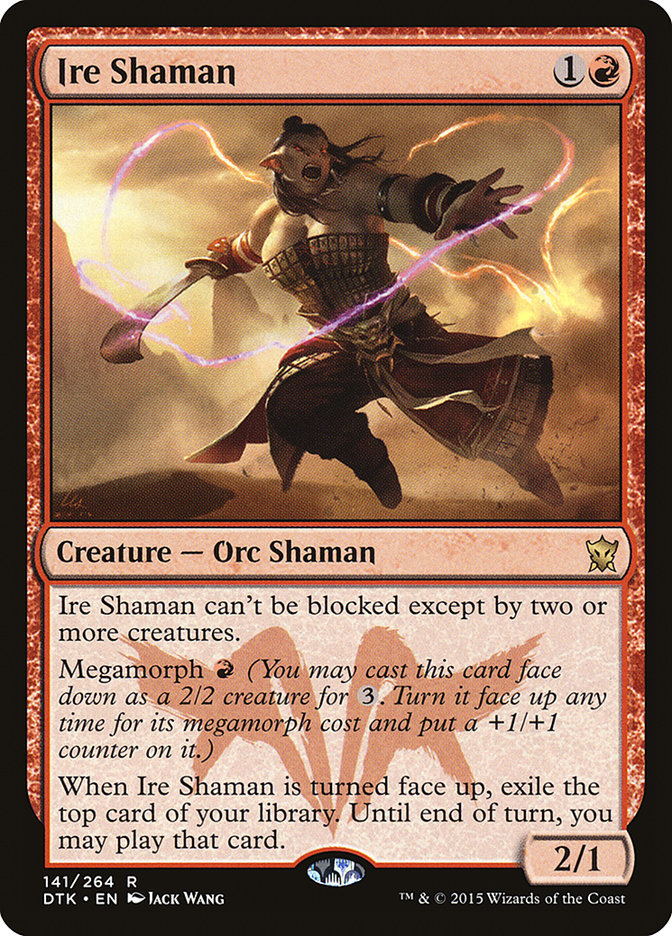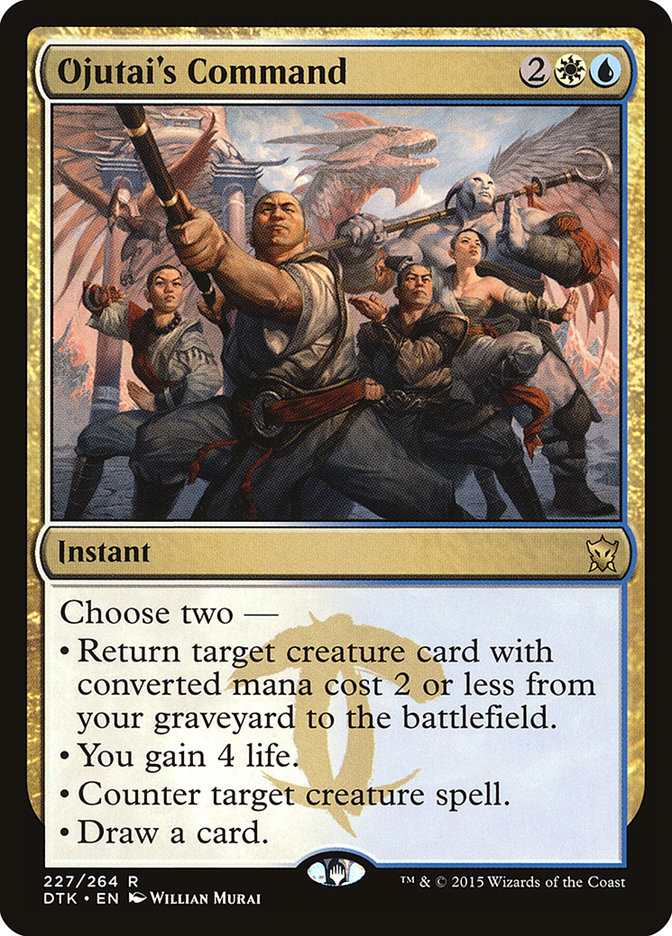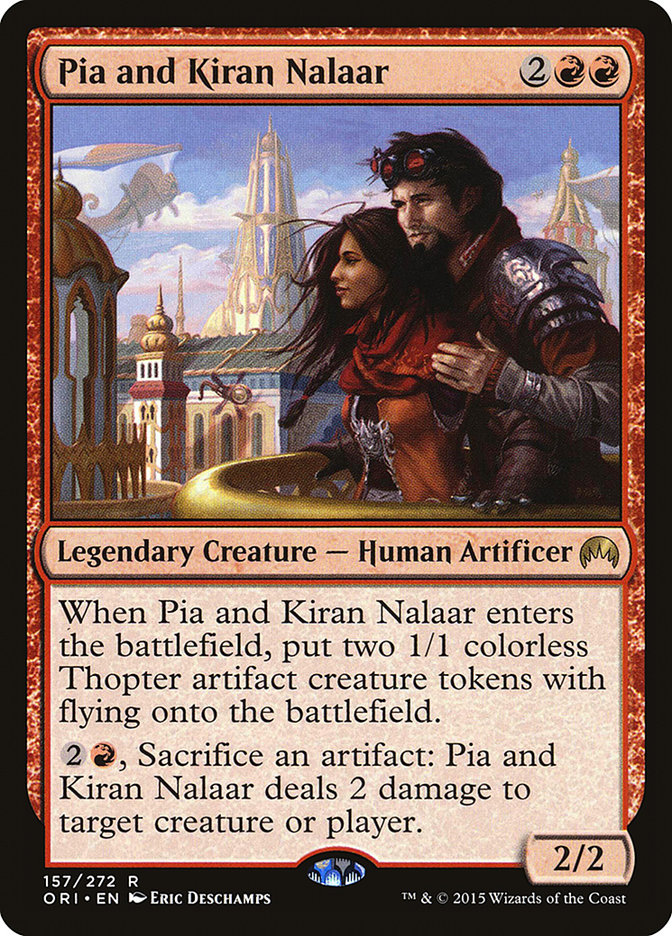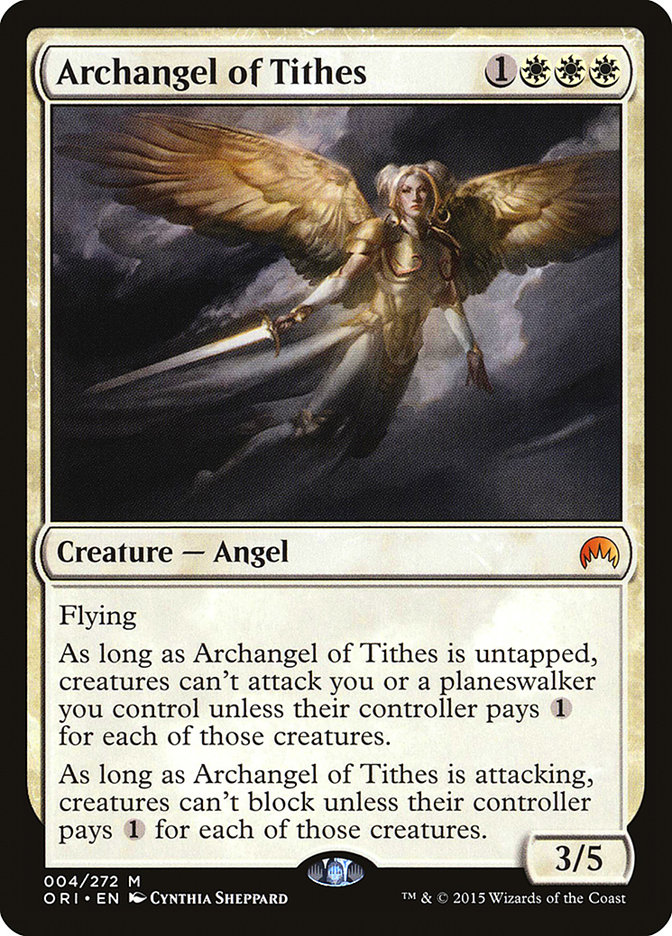It has been two weeks since I wrote about a couple initial spoilers from Magic Origins, and in that time there have been plenty more interesting cards revealed for our brewing pleasure. It seems WotC Claus was extra-generous this year, bringing tons of interesting, powerful cards to build around down our chimney. That red suit must get hot in the summertime, so let’s all be extra thankful this year for what promises to be a memorable last hurrah for the Core Sets.
This week I will be going through some of my early brews with the cards I am most excited about, and I’ll start with my single favorite card from the new set: Harbinger of the Tides.
Harbinger of the Tides is that present you open that is everything you dreamed about and more. It’s the Cabbage Patch Doll, Furby, or Tickle Me Elmo that you just know every other kid is going to be jealous of. WotC Claus really nailed it on this one.
This newest iteration of the Man-O’-War template is obviously powerful just on rate, but what I find so attractive about it is its versatility. Despite the abundance of lands that enter the battlefield tapped, Khans Standard has been defined by tempo as both players jockey for board advantage. The ability to advance your board while containing your opponent’s is very powerful right now, and this card lets you accomplish that in multiple ways.
When played on your main phase, Harbinger offers a cheap Man-O’-War that can be played on turn two to stymie early aggression from your opponent or in the mid-game to gain a significant mana advantage by bouncing a more expensive creature. It is important to note that in the latter scenario you can easily play a second spell on the turn you cast Harbinger for an even bigger tempo swing.
But for an extra cost, we gain the incredible versatility of flash. The instant-speed option also means Harbinger can function as a combat trick, blowing out any opponent that dares to use a pump spell or Monstrous an attacker after blocks. The effect is so devastating that just the threat of a Harbinger will gain you some percentage points against scared opponents, whether or not that fear is justified.
The more powerful part of adding flash is that it creates the squeeze. What is the squeeze?
Imagine you pass on your fourth turn without playing a spell. Your opponent untaps and can either cast a spell into your counter or not cast anything and risk losing a ton of tempo to Harbinger. They essentially have to guess which one you have and if they guess wrong they are massively punished.
We have seen similar tensions exist before with Restoration Angel vs. Snapcaster Mage + Mana Leak and Mistbind Clique vs. Cryptic Command, and those situations were a nightmare for opponents. If you play into the wrong side of the squeeze, you almost certainly lose – and if they have both it really doesn’t matter what you do.
However, this tension requires you to have a counterspell that generates value at four mana in an aggro-control shell. Wizards doesn’t just give you Cryptic Command all the time…
Oh. Well then. Let’s get to brewing!
Creatures (16)
Lands (26)
Spells (18)

Ojutai’s Command is simply filthy in this deck. With Harbinger of the Tides around it begins to feel even more like Cryptic Command, giving you the option of countering one creature while returning Harbinger to bounce another, generating an absolutely huge swing.
To support Harbinger I have moved away from red, making this much more of a U/W base deck rather than the previous R/W base Jeskai lists. This shift was already occurring with Patrick Dickmann’s Jeskai list from Grand Prix Providence that shaved a Rabblemaster, but I believe Harbinger is powerful enough that we can completely cut Rabblemaster and Stoke the Flames to bias the mana against red.
Clash of Wills is another important addition to this deck, giving you a reliable counterspell in the early game that should still work in the late game since you have a robust 26 lands. Almost all of the spells in this deck should be able to trade up the curve so you constantly generate small amounts of tempo, chipping away damage with your small creatures until your opponent dies without really realizing they were in danger to begin with.
That being said, the deck can still play effectively into the late game with the card advantage from Ojutai’s Command, Dig Through Time, and Dragonlord Ojutai as well as the power of Soulfire Grand Master’s recursion ability, so we still retain the classic versatility of the old Jeskai decks but in what I believe will be a more consistent shell.
One thing the loss of Stoke the Flames represents is a weakness to a resolved Stormbreath Dragon, which is why I added Encase in Ice to the sideboard. Fortunately our counterspells should protect us in game one with some careful play. Note that Harbinger of the Tides is also excellent at keeping Stormbreath Dragon at bay.
The lack of red mana also means we lose access to Anger of the Gods against aggressive decks, and with the printing of Goblin Piledriver those decks should become more popular. Wild Slash is a solid option because it lets you get to double-spell turns more quickly and plays catch-up when you fall behind, plus it can combine with Soulfire Grand Master to stabilize you in the mid-game. Another option is Displacement Wave, which is great against Dragon Fodder and Hordeling Outburst and serves as a great follow-up to Mantis Rider when cast for X = 2.
This deck plays the exact kind of calculated aggressive plan that I prefer, and I think it solves some of the issues previous Jeskai lists had with being overpowered when on their more aggressive draws, especially if they stumble on mana.
A more obvious home for Harbinger is Blue Devotion as a powered-up Tidebinder Mage. You can even hit it off of Collected Company as another way of putting it into play at instant speed!
Creatures (32)
- 4 Thassa, God of the Sea
- 4 Master of Waves
- 4 Kiora's Follower
- 4 Hypnotic Siren
- 4 Stratus Dancer
- 4 Shorecrasher Elemental
- 4 Silumgar Sorcerer
- 4 Harbinger of the Tides
Lands (24)
Spells (4)
Sideboard

Harbinger may be good enough for Blue Devotion to reemerge as a true contender rather than fringe archetype. It may also be good enough that we can build the deck more like it was last year with a lower curve:
Creatures (31)
- 4 Thassa, God of the Sea
- 4 Master of Waves
- 4 Mindreaver
- 4 Hypnotic Siren
- 4 Shorecrasher Elemental
- 3 Silumgar Sorcerer
- 4 Faerie Miscreant
- 4 Harbinger of the Tides
Lands (24)
Spells (5)
Sideboard

This list should turn on Thassa more regularly, as its curve resembles that of last year’s Blue Devotion deck. Mindreaver is a subpar card but Tidebinder Mage wasn’t much better in a lot of matchups last year, but the real benefits come from getting another two-devotion two-drop in the deck.
Faerie Miscreant looks like an odd addition at first, but I think works very well in this deck. Having cheap creatures to flood the board is very important, especially when they fly, and Miscreant does that without the downside of flooding on anemic cards because extra copies will end up cycling fairly often.
Increasing the deck’s ability to generate Devotion quickly means we can take advantage of Nykthos to turbocharge Thassa and Shorecrasher Elemental while also gaining the powerful Bestow option on Hypnotic Siren. It is possible that we want a second copy of Nykthos, but for now I am favoring consistency, which was a surprising issue for last year’s Mono-Blue lists because of the presence of Mutavault.
Of course, these lists are fairly bland and uninspired. This is a time to go off the deep end and try something really sweet. After all, Harbinger of the Tides is good enough to hold it together, right?
Creatures (22)
- 4 Ornithopter
- 3 Phyrexian Revoker
- 4 Master of Waves
- 4 Chief Engineer
- 3 Scuttling Doom Engine
- 4 Harbinger of the Tides
Lands (22)
Spells (16)

Master of Waves is less of a must-answer threat in this deck but it does provide for some impressive tempo-swings with Chief Engineer, which forces the opponent into the awkward position of having to choose which threat to deal with on their turn and which to leave in play.
Ensoul Artifact and Shrapnel Blast are great payoffs for committing to the artifact theme, providing explosive starts and great reach. Shrapnel Blast is particularly good with Scuttling Doom Engine, making your opponent have to worry about any life total below twelve.
 Thopter Spy Network could prove to be much better than Bident of Thassa since it is a threat by itself when you have Darksteel Citadel, but Bident being an artifact means you can accelerate it onto the battlefield with Chief Engineer, especially when combined with Master of Waves. Having one of each is certainly better than two of either since they fuel each other and Bident is legendary, so a split is always going to be optimal. If we were to add more, I would lean toward the Spy Network. Extra bodies are very good when you have the equipment to make them into sizable threats, and unlike previous Thopter tokens, these are colorless for Ghostfire Blade.
Thopter Spy Network could prove to be much better than Bident of Thassa since it is a threat by itself when you have Darksteel Citadel, but Bident being an artifact means you can accelerate it onto the battlefield with Chief Engineer, especially when combined with Master of Waves. Having one of each is certainly better than two of either since they fuel each other and Bident is legendary, so a split is always going to be optimal. If we were to add more, I would lean toward the Spy Network. Extra bodies are very good when you have the equipment to make them into sizable threats, and unlike previous Thopter tokens, these are colorless for Ghostfire Blade.
I also really like Stubborn Denial because Ghostfire Blade gives us an easy way to turn on Ferocious, and defending our best threats (Master of Waves, Ensoul Artifact, etc.) is very important.
There are plenty of other options in a deck like this, from committing to a more artifact-heavy build with Juggernaut to being lower on the curve with Illusory Angel. I think the former suffers from being too vulnerable to cheap removal like Draconic Roar while the latter is too difficult to cast before turn five, which is where you finally start to gain a significant advantage.
Renowned Weaponsmith is another option that takes the deck in more of a ramp direction and allows for some free value, particularly with a Heart-Piercer Bow to put to work against most aggressive decks. I prefer to play more aggressively with Shrapnel Blast and Ensoul Artifact, but Weaponsmith could be appropriate in a Mono-Blue list. You could even use Soul of New Phyrexia as a secondary fatty if necessary.
Moving away from Harbinger but staying with the artifact theme, I would like to focus next on Pia and Kiran Nalaar. This one is more like getting some nice comfortable socks. When you’re a kid you hate it because you want something flashier, but as you grow older you learn to enjoy getting something practical and useful.
On power level alone this is a Constructed-worthy card, even if it is lackluster in comparison to Siege-Gang Commander. Like Thunderbreak Regent, this card can provide four power for four mana and some easy reach at the top end of the curve in an aggressive deck. However, enabling Shrapnel Blast is huge for any such deck, pushing this card over the top if we are willing to commit to playing artifacts:
Creatures (20)
- 4 Ornithopter
- 1 Phyrexian Revoker
- 4 Goblin Rabblemaster
- 3 Zurgo Bellstriker
- 4 Ire Shaman
- 4 Pia and Kiran Nalaar
Lands (22)
Spells (18)

For the most part we are just surrounding the typical artifact core with aggressive red cards to take the best advantage of Pia and Kiran as well as Shrapnel Blast, but with the staggering number of options aggressive red decks have in this format the choices were not obvious.
Goblin Rabblemaster is a great card, of course, but is not an automatic staple in normal red aggro decks. This one is a little bigger on the curve and can cast Rabblemaster on turn two with an Ornithopter and a Springleaf Drum. Turn-two Rabblemasters have been backbreaking out of G/R Aggro variants for a while now, and it is just as absolutely devastating here. Rabblemaster also allows us to play Stoke the Flames, which both plays well with the Nalaars and gives the deck an absurd amount of reach.
 Ire Shaman also plays well with the amount of burn in the deck and the attrition capabilities of Rabblemaster and the Nalaars. Moreover, as a Megamorph it plays well with Ghostfire Blade, which goes very well on the evasive Shaman. It is also important to note that even though you have to pay full price, putting Ghostfire Blade on Goblin Rabblemaster can be a devastating play for anyone looking to trade their Courser of Kruphix or Fleecemane Lion, and the four mana you pay curves perfectly with Rabblemaster.
Ire Shaman also plays well with the amount of burn in the deck and the attrition capabilities of Rabblemaster and the Nalaars. Moreover, as a Megamorph it plays well with Ghostfire Blade, which goes very well on the evasive Shaman. It is also important to note that even though you have to pay full price, putting Ghostfire Blade on Goblin Rabblemaster can be a devastating play for anyone looking to trade their Courser of Kruphix or Fleecemane Lion, and the four mana you pay curves perfectly with Rabblemaster.
I chose Zurgo Bellstriker as an additional one-drop over the other options mostly because I think it is the most powerful one. The Dash ability also lets you sneak in damage, which is key in a deck with so much reach. Still, in a deck with this high a density of non-creature spells I could see Monastery Swiftspear being better.
The last deck I would like to explore is White Devotion. I have tried to make this deck work throughout Khans Standard only to be let down when each new addition isn’t good enough.
Cards like Ojutai’s Exemplars were that present your parents always seem to screw up in some small but very important way, like a Mad Catz controller that you always give to the friend you don’t really like but hang out with anyway. Will the cards in Magic Origins finally break the streak? I certainly hope so, but at this point my optimism is decidedly cautious.
Creatures (25)
- 4 Knight of the White Orchid
- 1 Heliod, God of the Sun
- 4 Brimaz, King of Oreskos
- 4 Wingmate Roc
- 3 Anafenza, Kin-Tree Spirit
- 2 Kytheon, Hero of Akros
- 3 Kytheon's Irregulars
- 4 Archangel of Tithes
Planeswalkers (2)
Lands (25)
Spells (8)

This deck is filled with Origins cards, from Archangel of Tithes and Knight of the White Orchid to Kytheon and his Irregulars. The Irregulars is the most suspect of the group on sheer rate, but it serves two important functions for the deck. First, it is a mana sink for Nykthos. Second, and more important, it lets you interact with the board, which can be tough for a deck that wants to play out as many permanents as possible.
Archangel of Tithes is the card I am most excited about for the deck. It lets you play immediate offense with some of your smaller creatures or defense if you have fallen behind. Limiting your opponent’s access to mana is exacerbated by the fact that this deck can generate so much of it with Nykthos, and the card scales well in multiples. This is the card that could finally put White Devotion on the map.
Knight of the White Orchid is the perfect early creature for this deck, allowing you to get ahead when on the draw while also servicing as a reasonable aggressive body when necessary. I’m not sure about Kytheon in this deck since it may be difficult to trigger without Brimaz, but it is powerful enough to try. If the deck moves in a more aggressive direction with something like Citadel Siege, Kytheon becomes much more attractive – but right now it is expendable.
The Heliod may seem too cute, but I think it will be surprisingly easy to turn on in this deck and one copy may be too few even with the apparent glut in the curve at four. If the deck moves in a more controlling or midrange direction, I will certainly look to add another copy or two.
One major issue for the deck is Stormbreath Dragon. Archangel makes the prospect of a turn-five Dragon much easier to deal with, but only if you are sufficiently ahead. The mana should allow for a small splash if necessary, likely for black and Ultimate Price although green is reasonable for Plummet which also takes care of Dragonlord Atarka. Green also gives you access to Dromoka’s Command, which seems great here since this deck that should always have a reasonable creature to fight with.
There is another, spicier way of playing White Devotion, this time building around Starfield of Nyx:
Creatures (16)
- 3 Knight of the White Orchid
- 1 Heliod, God of the Sun
- 4 Doomwake Giant
- 4 Nyx-Fleece Ram
- 4 Underworld Coinsmith
Lands (26)
Spells (18)

This is certainly in the experimental category, but the deck is theoretically sound with a robust combination of cards that extend the game and cards that are great going long. Eventually your board becomes so large that Doomwake Giant and Starfield of Nyx wrath their board every turn, forcing the opponent to succumb to your army of enchantments.
Underworld Coinsmith and Nyx-Fleece Ram do a great job of holding the fort early and giving you plenty of time to set up, and the sheer density of enchantments should protect your Starfield of Nyx from Dromoka’s Command – at which point the latter can likely rebuild whatever was lost.
This deck should be favored going long against most cards, with the glaring exception of Ugin, the Spirit Dragon. Ugin can undo a lot of work very quickly and while Mastery of the Unseen and Banishing Light offer some hope, Ugin may be too powerful against this deck for it to succeed in most metagames.
For me, the most exciting part of this deck is the prospect of playing hour-long matches at a ridiculous life total, much like the G/W Devotion debacle at Grand Prix Miami. Gotta make Cedric and Patrick earn their paycheck, you know?
There are so many great cards I did not mention today but I will leave it at this for now. Magic Origins looks like it will be the best Core Set of all time, and I am always excited to see Standard formats at their largest when the decks are their most powerful and efficient. With the Pro Tour and the Season Three Invitational in New Jersey to prepare for, this is going to be an interesting end to one of my favorite Standard formats of all time.
Merry Christmas!





